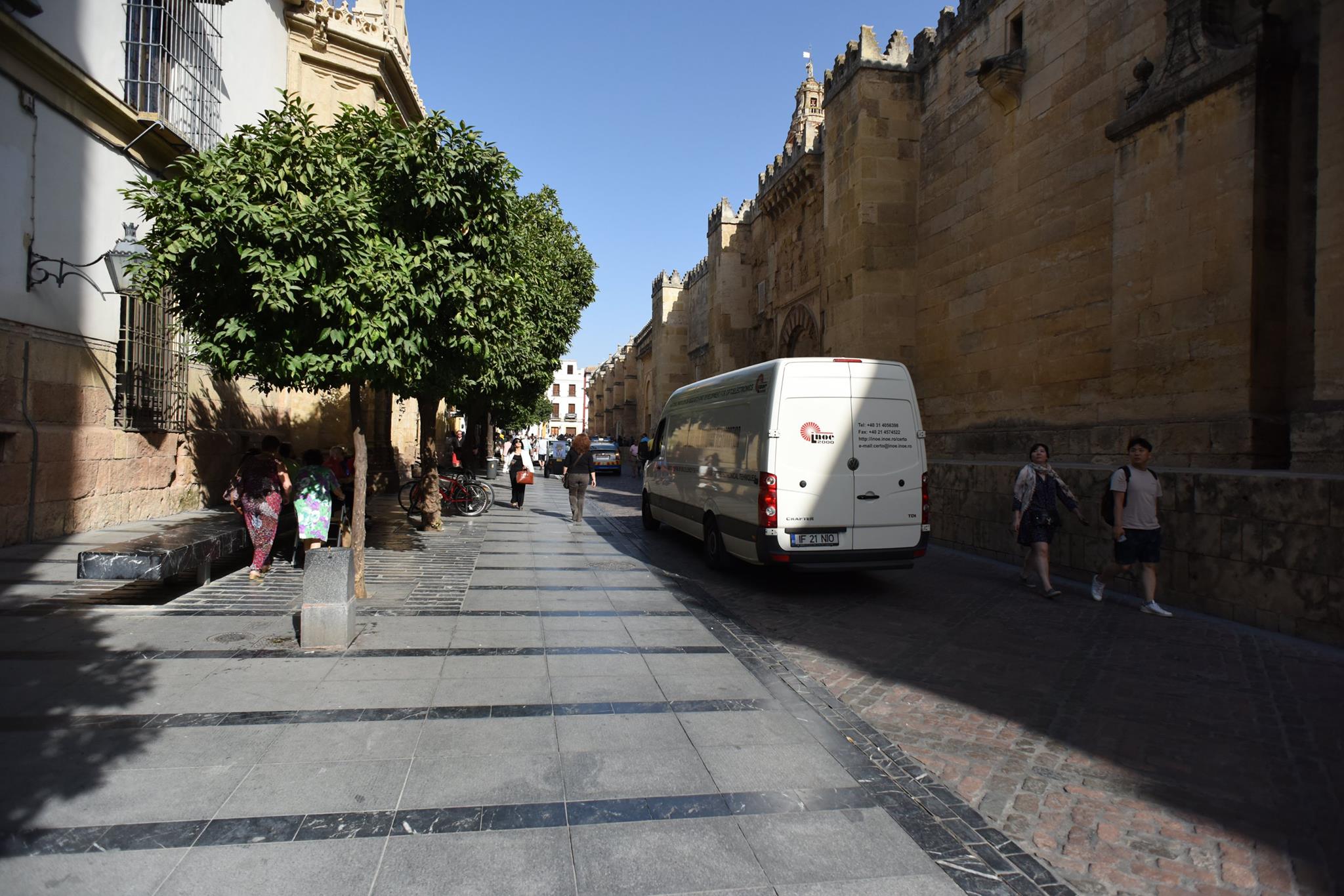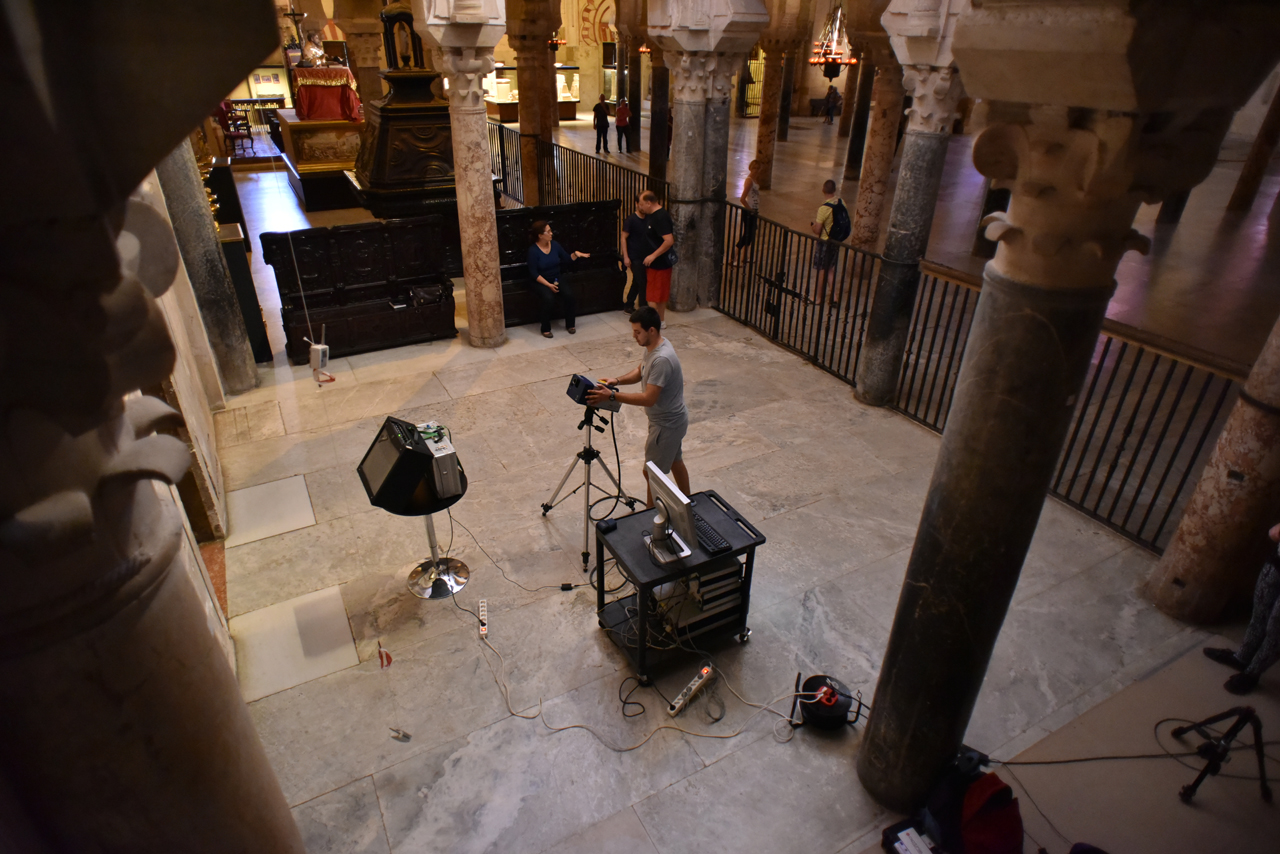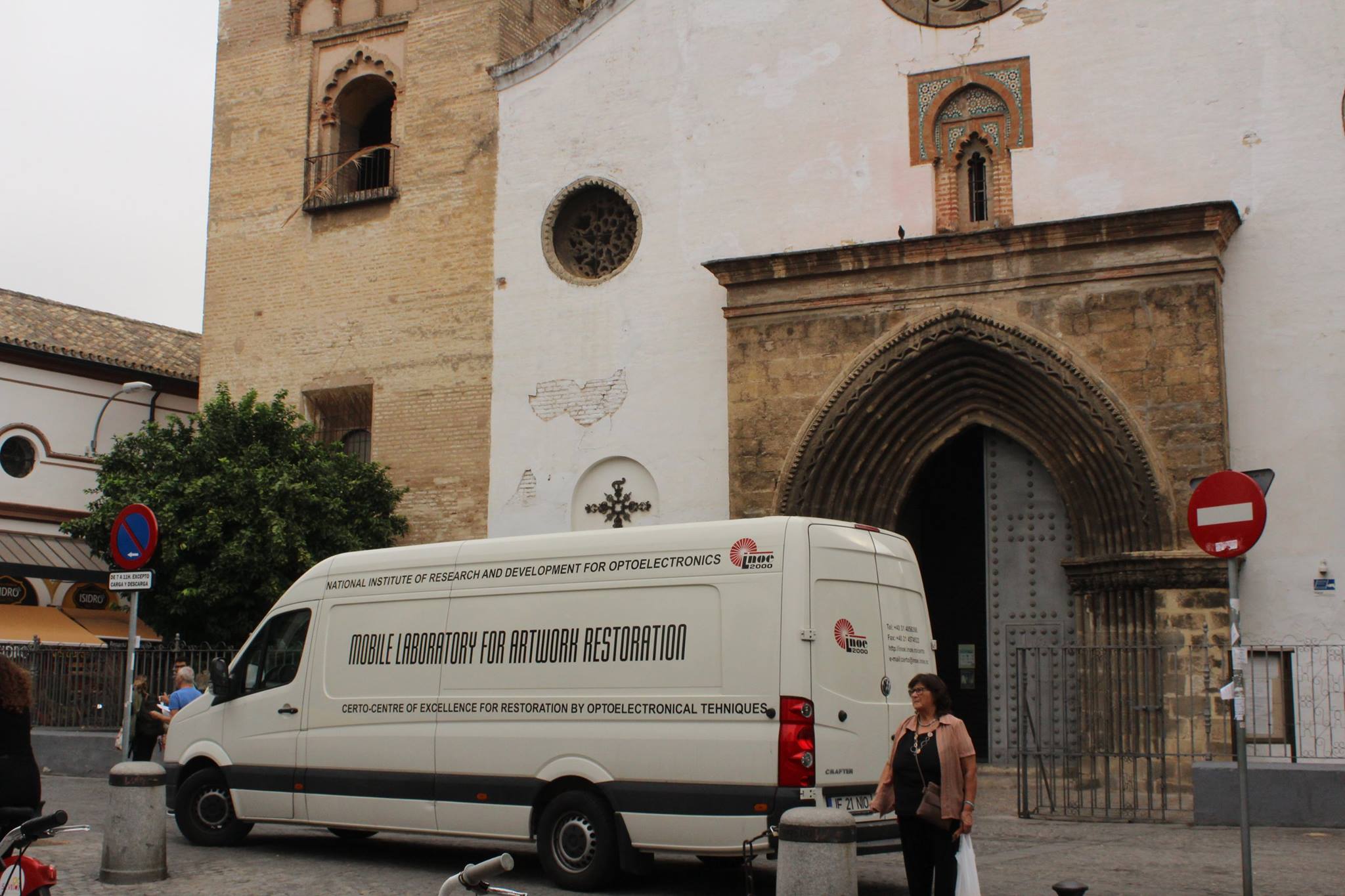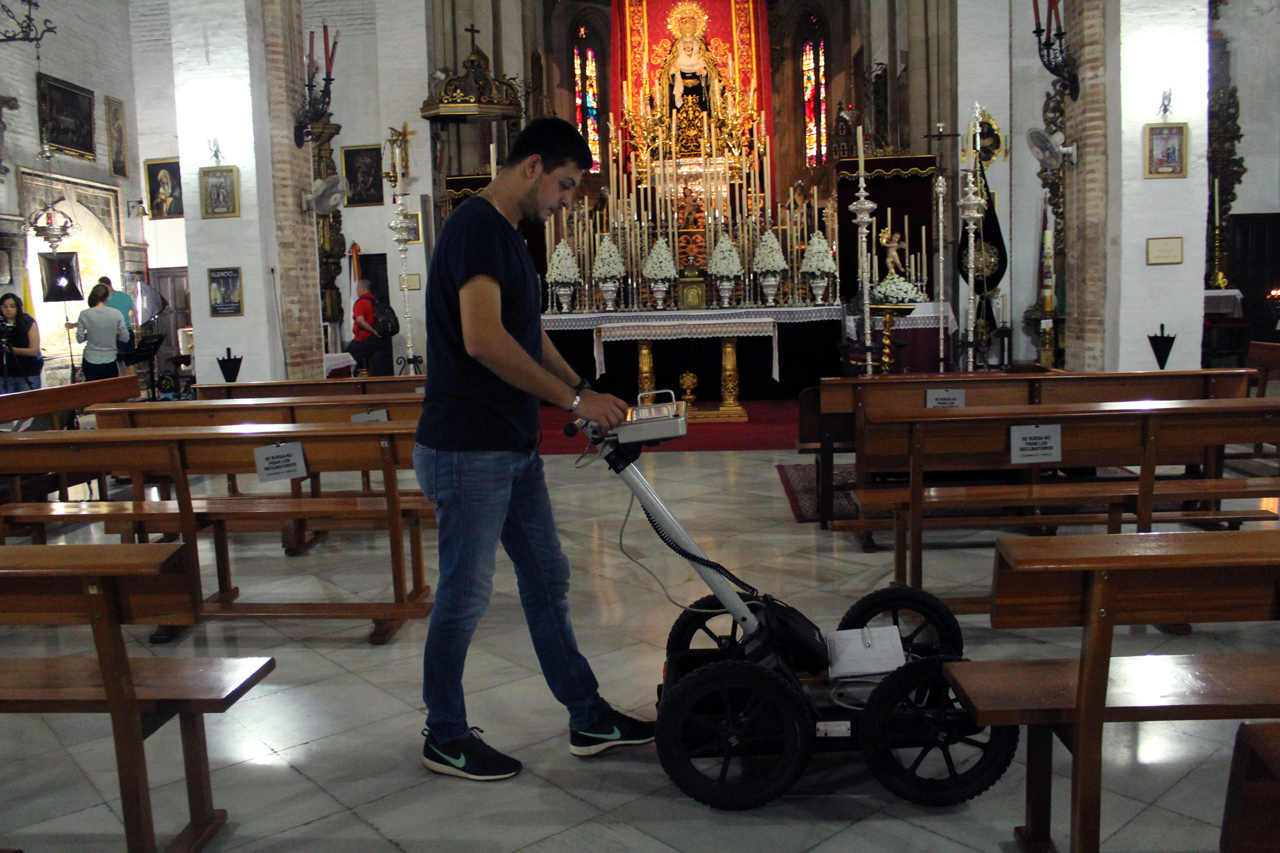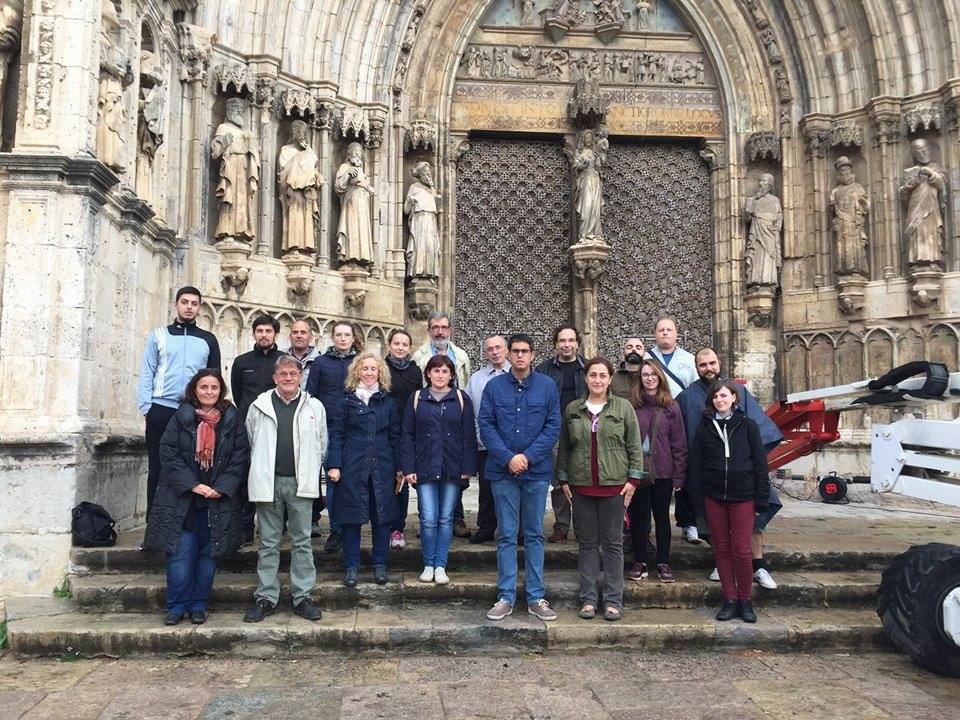Program Partenerships in prioritary domains
Code: PN-II-PT-PCCA-2011-3.2-0356 . Read More
- Summary |
- Newsletters |
- E-book |
- Workshop |
- Campaign in Targu Jiu |
- Campaign in Spain |
- Advanced training II
Field campaign in Spain
This international campaign is a result of the partnership between INOE2000 the University "Pablo de Olavide" - Department of Natural Sciences, in Seville, Spain. The objective is to investigative by physico-chemical means in advanced optoelectronics research. The campaign was organized from 5 to 15 October 2016 in Cordoba, Seville and Morella. The mobile laboratory ART4ART was deployed on the three locations to facilitate all the required investigation for each casuistry met.
This campaign was developed in three different cities in Spain: Cordoba, Seville and Morella.
Cordoba - Mezquita
Here, the investigations were focused in the Mihrab Dome area. One of the famous horseshoe arched mihrab was documented with laser Doppler vibrometry, thermal imaging and photogrammetry. Other investigations regarded the mosaic on the arches in the dome, FTIR analyzis on samples, or the pavement in that area (using GPR).
Seville - Omnium Sanctorum, San Roman, San Julien, Santa Marina, San Marco, Santa Maria Magdalena, Italica archaeological site
In Omnium Sanctorum and Santa Maria Magdalena churches were conducted investigations regarding the documentation of two alcoves with the terracotta crypts of two historical characters (dubbed "the duchess" and "the knight"). Methods used included XRF, FTIR, microscopy, photogrammetry and GPR survey on the church pavement.
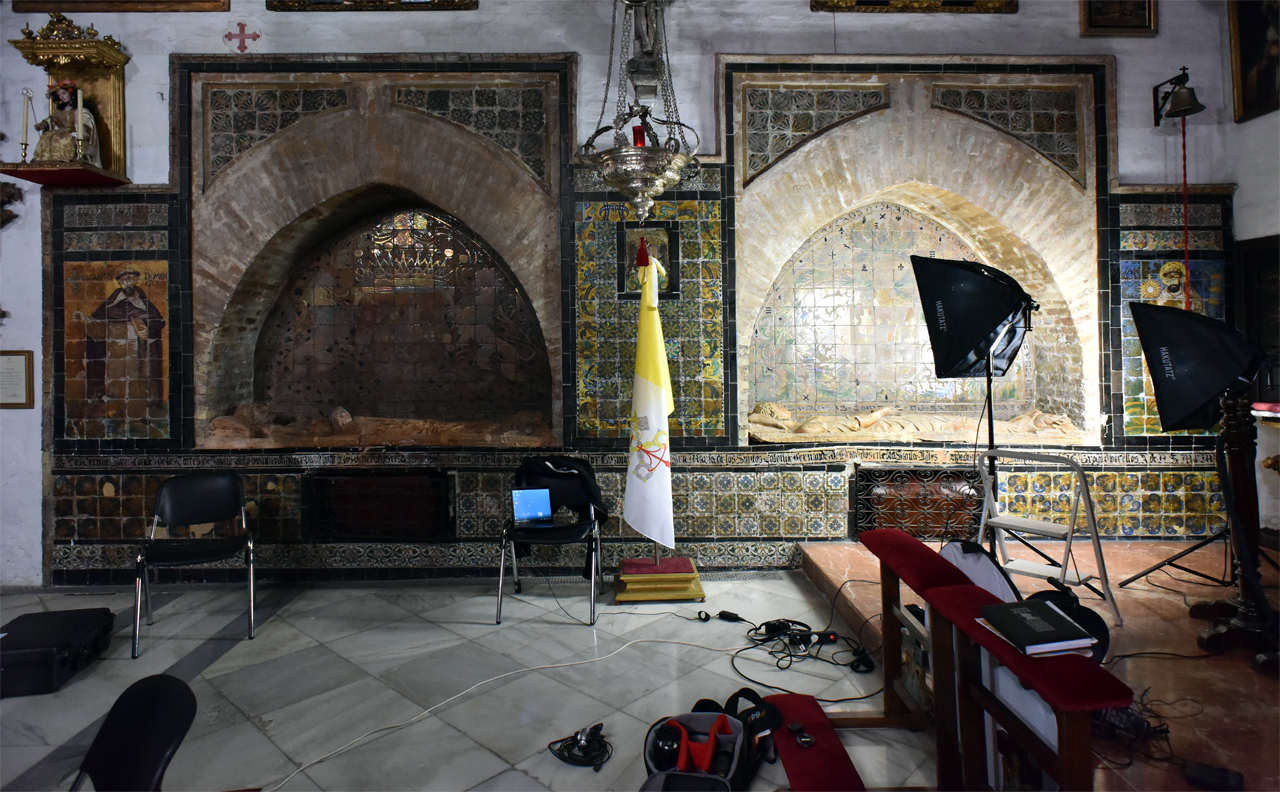
|
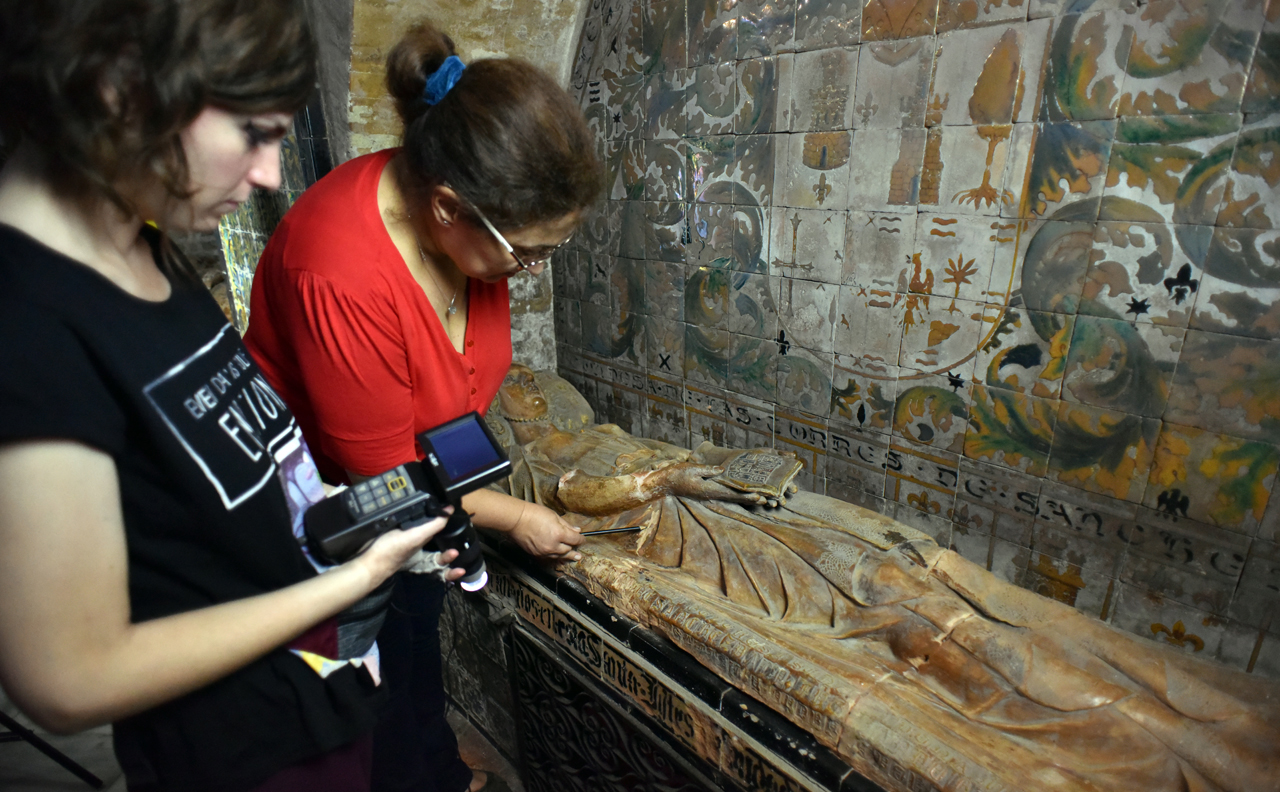
|
The other churches were only investigated by GPR survey.
Morella - Parroquia Arciprestral Basilica Santa Maria
The main objective here was the documentaion of the main gate. A lifting arm truck was employed to reach high areas with GPR, digital microscopy and XRF. Also a UAV was used to capture thermal images above the church and photogrammetric data for digital model reconstruction of the gate wall.
Inside the church selected areas were investigated using digital microscopy, XRF, thermal imaging and GPR survey for the pavement of the church.
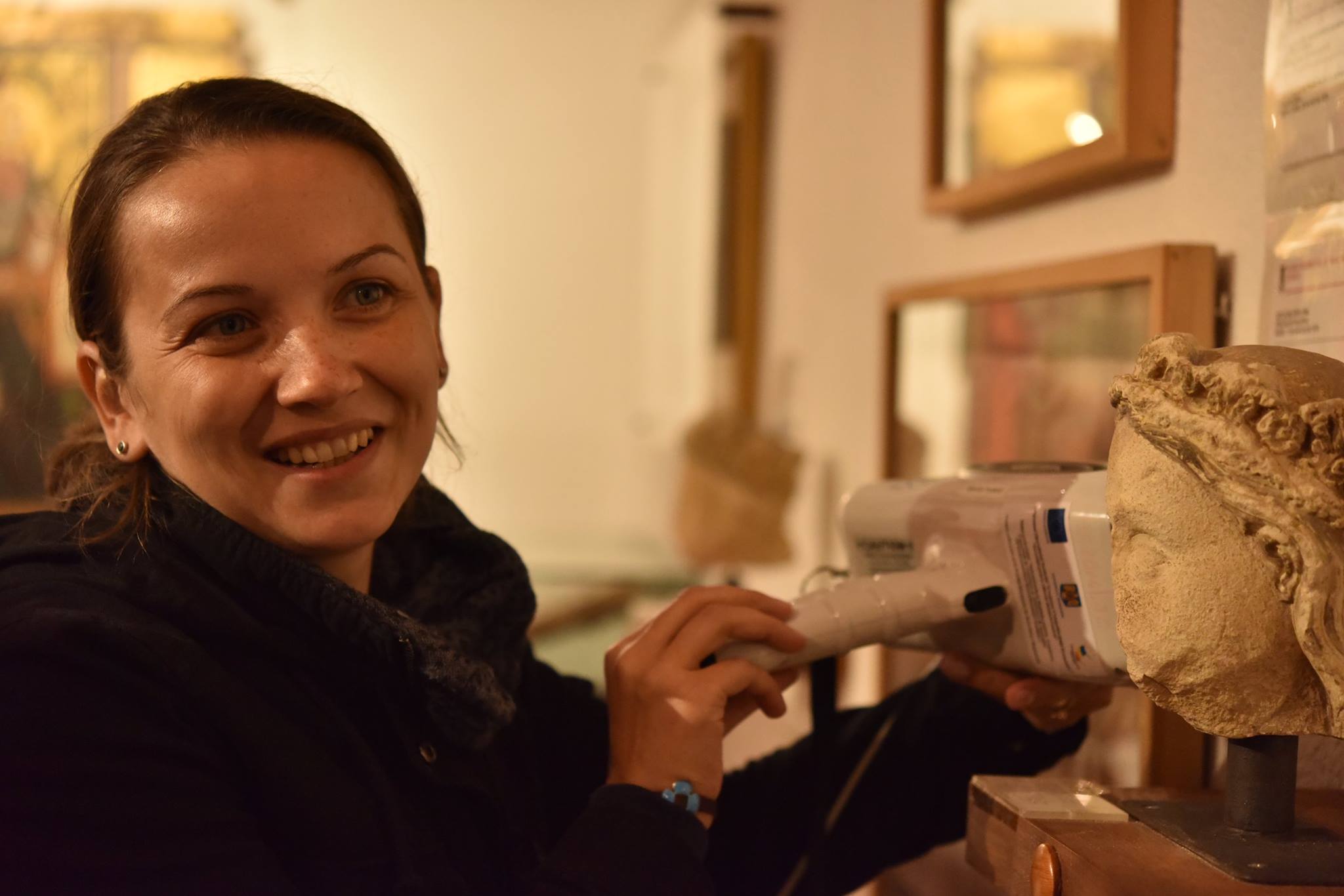
|
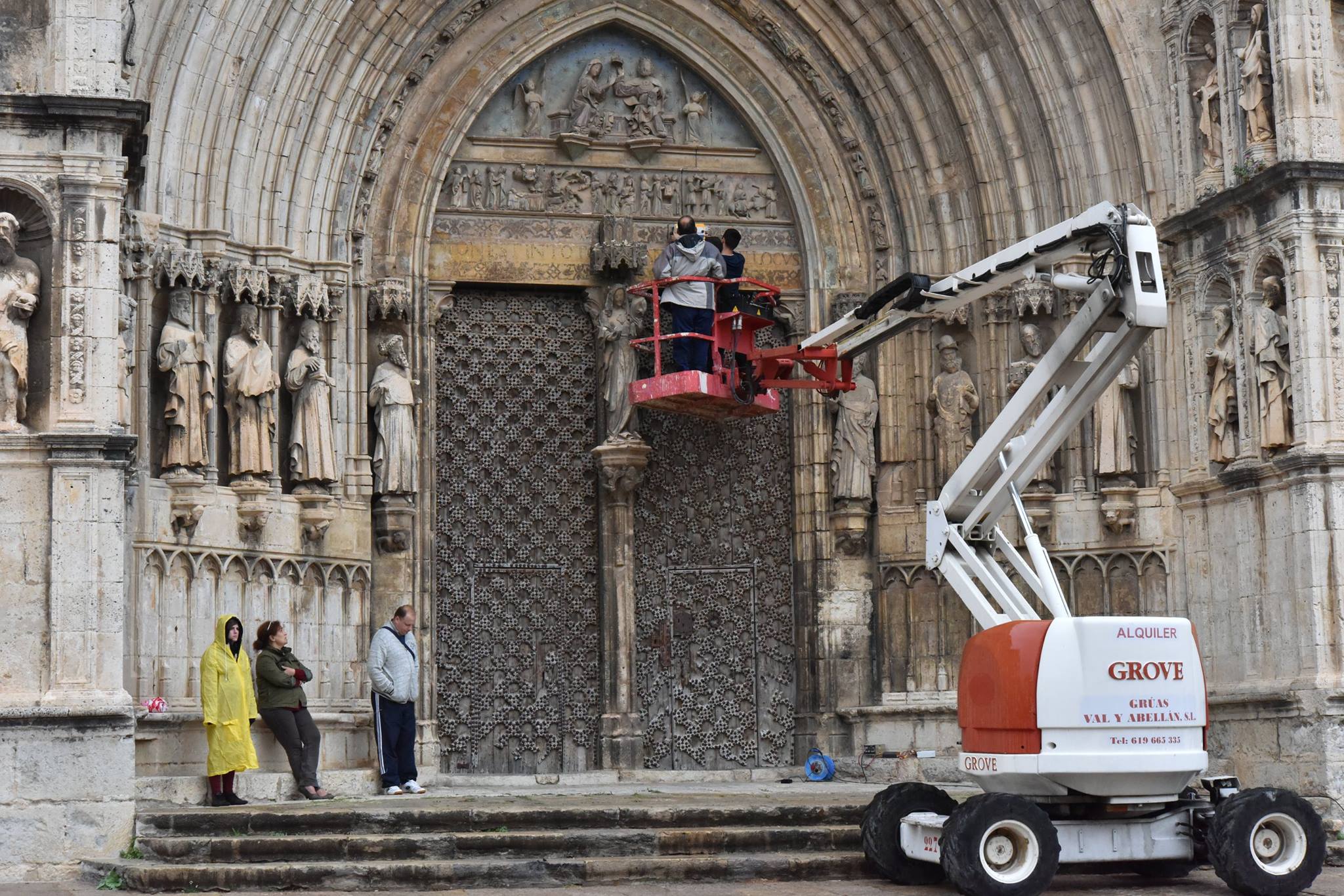
|
The whole team behind this field campaign:
Expected results
- Proceedings of a international conference
- Multinational clusters activity exhibition
- E-book
- Newsletter #9, #10
- Newsletter collection
- Scientific and administrative report

